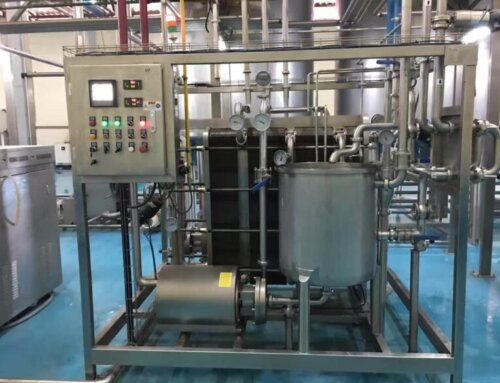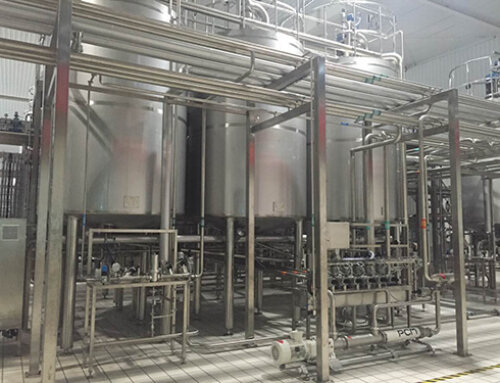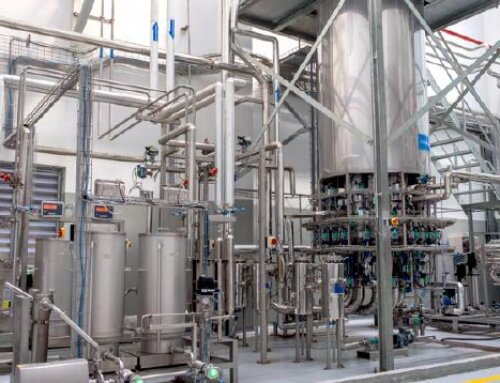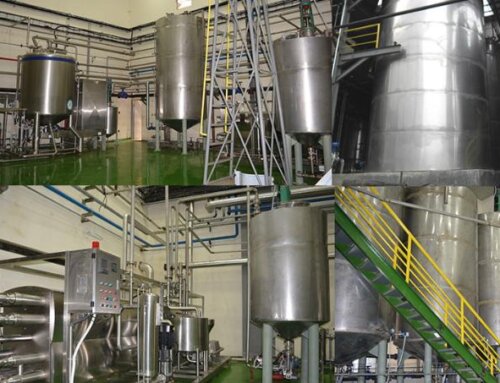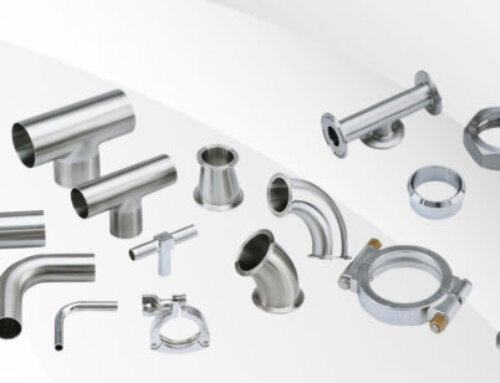Raw milk receiving generally includes raw milk collection, transportation, inspection, measurement, degassing, purification, cooling, storage and standardization. The main type of acceptance of raw milk is cow milk.

I. Collection and Transportation of Raw Milk
1. Collection of raw milk
After milking, it should be cooled immediately, and then stored in the raw milk collection station set up by the dairy factory. Milk barrels are used for transportation where milk sources are scattered, and milk tankers are used for transportation where milk sources are concentrated or where the transportation distance is relatively long. Milk barrels are generally 30-50L stainless steel barrels with smooth inner walls for easy cleaning.
The milk tanker is composed of a car, a milk tank, a milk pumping room, a manhole and so on. The milk tank is made of stainless steel with double-layer insulation, the milk temperature in the tank is 4±1℃ with a capacity of about 1-10T.
2. Transportation of raw milk
Raw milk can be directly collected and transported to the dairy processing plant by a milk tanker, and the raw milk is kept at a low temperature of 4°C during transportation.

II. Raw Milk Inspection
The inspection of raw milk mainly includes sensory, physical and chemical indicators and microbial inspections.
- Sensory testing: When the milk is collected by the milk tanker, the taste and smell of raw milk are not obviously abnormal, and there is no impurity;
2. Physical and chemical index testing: whether the density, acidity, protein and fat content of milk meet the relevant national regulations;
3. Microorganism mainly refers to the detection of the total number of colonies in milk and the sanitation of milk.
III. Raw Milk Measurement
There are two main methods for measuring milk:
- Weighing measurement: It is mainly weighed by a scale. This measurement method is simple, but the measurement accuracy is not high, and it is suitable for small milk processing plants. After the milk tanker is weighed by the floor scale, it is pumped to the milk storage tank for processing.
- Volume measurement: It is measured by electromagnetic pulse flowmeter. The volume measurement method has high accuracy and continuous measurement, which is suitable for milk processing plants with large production capacity. But before measuring raw milk through a flow meter, the milk needs to be vacuum degassed.

IV. Raw Milk Degassing
Raw milk generally contains about 10% of gas, which has a destructive effect on the subsequent processing of milk: it affects the measurement accuracy of milk, increases scaling after pasteurization, affects the accuracy of standardization, and promotes the polymerization of fat globules. Therefore, the collected milk should first be degassed. After the raw milk is preheated to about 60°C, it is pumped into the degassing tank, and the condensed gas is sucked and removed by the vacuum pump.

V. Purification of raw milk
The purpose of purification of raw milk is to remove mechanical impurities in the milk and reduce the number of microorganisms. Commonly used purification methods include filtration purification and centrifugal purification.
- Filtration purification: mainly install a stainless steel filter screen on the milk receiving tank and install a pipe filter between the milk receiving tank and the milk pump.
- Centrifugal purification: Use a centrifugal separator to separate the impurities in the milk by centrifugal force. The separation temperature is controlled at 40-60℃. The purified milk is best to be processed directly. If short-term storage is required, it must be cooled down.

VI. Raw Milk Cooling
The temperature of freshly squeezed milk is around 36°C, which is the most suitable temperature for microbial development and reproduction. If it is not cooled in time, the microorganisms in the milk will multiply, which will increase the acidity of the milk and affect the quality of the milk. Therefore, the milk that has passed the inspection and measurement should be quickly cooled to 2-6°C. The cooling of raw milk is generally carried out by a milk cooling tank or a plate cooler.

VII. Raw milk Storage
In order to ensure the continuous production of milk processing plants, a certain amount of raw milk storage is required, and the storage capacity of milk in the milk storage tank should not be less than the processing capacity of one day. The milk storage tank has a capacity of 5-300T. It is a stainless steel 304 double-layer insulation tank, and is equipped with agitator, sight glass, manhole, liquid level gauge, sampling hole and work escalator. After the milk has been in the storage tank for 24 hours, the temperature of the milk must not rise more than 2-3°C.
Large milk silos must have some form of stirring facility to prevent the cream from separating from the milk due to gravity. Stirring must be very smooth, too violent stirring will cause air in the milk and the rupture of fat globules, so that the free fat will be decomposed under the action of lipolytic enzyme in milk.
The temperature in the tank is displayed on the control panel of the tank, a common thermometer is generally available, but increasingly electronic sensors are used, which send a signal to the central console, where the temperature is displayed.
The milk storage tank also needs to have low level protection, all milk stirring must be mild, therefore, the stirrer must be covered with milk before starting. For this purpose, an electrode is often mounted on the tank wall at the point where stirring begins at the desired level. When the liquid level in the tank falls below this electrode, stirring stops, this electrode is commonly referred to as a low-level indicator (LL).
To prevent overflow, a high-level electrode (HL) is installed in the upper part of the tank. When the tank is full, the electrodes close the inlet valve and the milk is diverted from the pipe to another larger tank.

VIII. Raw Milk Standardization
Standardization of raw milk refers to adjusting the fat content in milk. When the fat content in raw milk is insufficient, cream should be added or a part of skimmed milk should be separated; when the fat content in raw milk is too high, skimmed milk added or cream can be extracted. The standardized equipment consists of a centrifuge separator and a density meter and pipes.
In all, raw milk receiving is the key process for producing milk products, only by strictly controlling every raw milk receiving procedure can we guarantee high-quality milk. We can offer all the equipment for milk processing.

